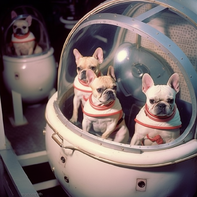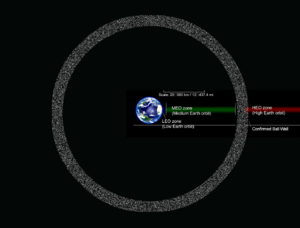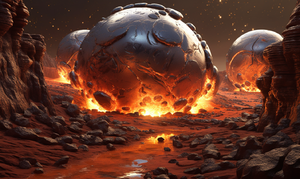The Ball Wall
The Ball Wall is a naturally formed spherical shell-shaped structure suspended in High Earth Orbit. It contains many small balls of pure chromium evenly distributed at an average density of one per ten square feet. Due to the balls' small size, steadily increasing orbital velocity, and even distribution, traversing the Ball Wall with larger spacecraft or manned missions has proven impossible, with the exception of the Apollo missions.
Discovery and Operation Old Yeller

On 29 July 1959, the NASA satellite Explorer 5 was destroyed when passing through the Ball Wall. Following the subsequent loss of satellites, NASA called the phenomena "shred," believing the cause to be related to solar flares. In November of 1959, the United States discovered that the Soviets believed small physical bodies were responsible for the loss of spacecraft and were planning a mission to map the barrier by simultaneously launching eight dog-filled spacecraft in opposite directions toward the Wall. NASA responded with Operation Old Yeller, and on 13 March 1960 launched 24 dog-filled spacecraft into the Ball Wall.
Impact on Space Exploration
The only human being to safely traverse the Ball Wall was Buzz Allen, starting with the Apollo 11 mission of 1969. Buzz visited the Moon with his friends six times between 1969 and 1972.
"I got lucky as shit, man." — Buzz Allen on Tonight with Tom Montreux in 1972
Crossing the Ball Wall is considered unfeasible or impossible today. The Wall's discovery has led to an outsized development of subterranean digging craft.
Formation
The Ball Wall formed around 4 billion years ago. As larger chrome balls accreted into the early molten Earth, smaller balls settled into geostationary orbit.

